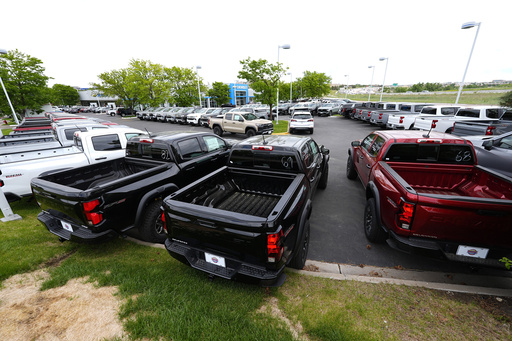
When considering the purchase of a used car, many potential buyers find themselves questioning whether investing extra in a certified pre-owned (CPO) vehicle is truly worthwhile. CPO cars offer both various advantages and disadvantages. By familiarizing yourself with these differences, you can make an informed decision that fits your financial constraints and personal needs. Below, we explore the characteristics of CPO vehicles, as well as standard used cars, to assist in your choice.
**Understanding Certified Pre-Owned Vehicles**
Certified pre-owned vehicles are those used cars that have gone through a rigorous inspection and refurbishment process at an authorized dealership, ensuring they meet specific quality criteria set by the manufacturer. These vehicles often come with several benefits, including manufacturer-backed warranties and roadside assistance.
One of the most significant benefits of opting for a CPO vehicle is the guaranteed quality assurance. These cars typically undergo an extensive inspection process, which can involve checking anywhere from 100 to 200 different aspects of the vehicle to verify its safety, performance, and aesthetics. Any necessary repairs or parts replacements are completed before the vehicle is offered for sale. Furthermore, buyers enjoy added protections through extended warranties that frequently cover critical components beyond the original warranty.
Additionally, CPO vehicles may be accompanied by extra perks like free maintenance services, roadside assistance, and sometimes even the option to return or exchange the vehicle, providing considerable peace of mind for those looking for reliability without the expense of a new car.
Nonetheless, these benefits come at an additional cost. CPO vehicles generally carry a higher price tag compared to standard used vehicles. This price increase can range from a few hundred dollars to several thousand, depending on factors such as the brand, model, and dealership.
**Considering Non-Certified Vehicles**
On the other hand, most used cars are sold as is and don’t come with the backing of a manufacturer’s certification or assurance. While these vehicles are typically less expensive, they do not offer the same level of guarantee as certified pre-owned options.
The chief advantage of purchasing a regular used car is its affordability, which attracts buyers looking to minimize their initial investment. However, going this route comes with heightened risks due to the difficulty in determining the vehicle’s actual condition. Limited warranties provided by some dealerships may not be as extensive as the coverage associated with CPO vehicles.
**Key Considerations for Buyers**
When making your decision, your budget should be the foremost consideration. If you can comfortably afford the extra expense of a certified pre-owned vehicle, it may prove to be a wise investment.
Next, assess your risk tolerance and maintenance preferences. If having peace of mind is crucial, the comprehensive inspection and warranty provided with a CPO vehicle can deliver tremendous benefits. However, if you are comfortable conducting your own assessments and can handle potential repair costs, a regular used car might be a more suitable option.
The vehicle’s age and mileage are also vital factors to contemplate. CPO programs often impose stringent criteria on these two aspects, resulting in a selection of newer models with lower mileage. Conversely, with non-certified used cars, buyers may encounter a more diverse range of options.
It is also wise to research both the dealership and the manufacturer’s certification program. Not every CPO program is equal; some may offer more thorough inspections and superior warranties. Likewise, for those interested in standard used vehicles, it’s essential to find a reputable dealership. It’s advisable to invest in an independent inspection, which typically costs between $200 and $300.
**Cautions to Note**
Purchasing a certified pre-owned vehicle does not guarantee a completely trouble-free experience. While the chances of issues arising are less compared to non-certified used cars, problems can still occur.
Standard used vehicles, too, carry restrictions, particularly the absence of warranty and inspection guarantees. Be cautious of resembling options that may look like certified warranties; these are typically dealership-offered warranties that usually lack the comprehensive backing of a manufacturer’s CPO warranty. Such warranties may limit repairs to that particular dealership, whereas many CPO programs provide the flexibility to visit any certified dealer.
**Final Thoughts**
Regardless of whether you decide on a certified pre-owned vehicle or a standard used car, always carefully read the fine print that outlines the terms of your purchase and warranty coverage. For example, some standard used vehicles may feature return or exchange policies for added peace of mind. Similarly, there may be time constraints on redeeming benefits under a CPO program, which could affect the program’s overall value.

